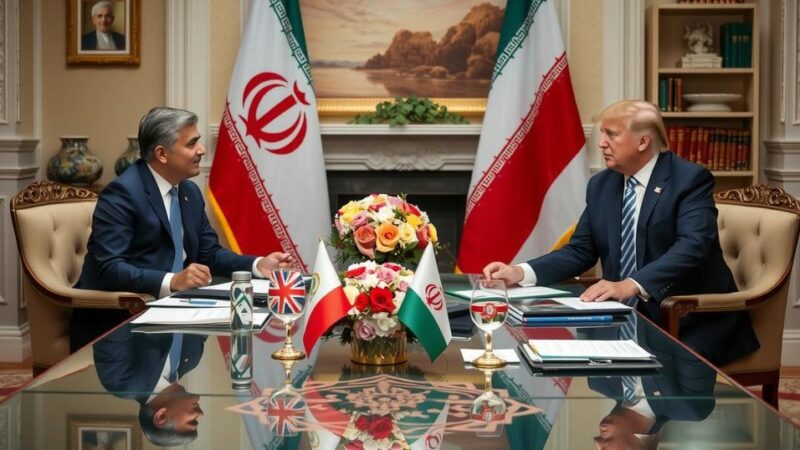Following the death of Nasser in 1970, Anwar Sadat emerged as Egypt’s president and initiated a series of political maneuvers, marked by the October 1973 War against Israel, aimed at securing favorable peace negotiations. Sadat’s landmark visits, reforms, and the subsequent Camp David Accords showcased his ambition for national reconstruction but incurred significant costs domestically and internationally, leading to economic strife and the rise of extremism while alienating traditional Arab allies.
Following President Gamal Abdel Nasser’s death on September 28, 1970, Vice President Anwar Sadat ascended to power, initially perceived as an interim leader but soon demonstrating remarkable political acumen. In May 1971, he consolidated his power through a maneuver termed the “Corrective Revolution.” This pivotal moment laid the groundwork for the October 1973 Yom Kippur War, which saw a unified Syrian-Egyptian offensive surprise Israel, igniting a significant chapter in Egypt’s history. The October War, commencing on October 6, was strategically designed to pressure Israel into peace negotiations. Although Egypt did not achieve a definitive military victory, Sadat positioned the war as an Egyptian triumph, facilitating subsequent peace endeavors. Following initial gains, Egyptian forces faced a military setback once Israel regrouped, ultimately leading to a ceasefire brokered by the United States. Sadat’s strategic vision prioritized peace with Israel, seeking a diplomatic resolution that favored Arab interests. He signed the Sinai I and II disengagement agreements, leading up to his historic visit to Jerusalem in November 1977. This unprecedented move paved the way for the Camp David Accords in 1978, negotiated alongside Israeli Prime Minister Menachem Begin and United States President Jimmy Carter. These accords earned Sadat and Begin the Nobel Prize for Peace and culminated in the formal Israeli-Egyptian peace treaty on March 26, 1979. The treaty initiated comprehensive frameworks for withdrawal, security cooperation, and the normalization of relations between the two nations. Amidst this backdrop of diplomatic engagement, Sadat also initiated an open-door policy aimed at economic revitalization, seeking foreign investment to stimulate Egypt’s economy. This policy yielded significant benefits, including an extensive U.S. aid program. However, the peace treaty extracted heavy costs; discontent brewed within the Arab world, leading to Egypt’s expulsion from the Arab League after the treaty’s signing due to perceived abandonment of Palestinian rights. Domestically, Sadat enacted constitutional reforms increasing political participation and lifted restrictions on political parties. Nevertheless, economic difficulties incited widespread protests in January 1977, revealing deep-seated disillusionment among the populace. As Egypt entered the 1980s, ongoing economic strife and unresolved Palestinian issues undermined Sadat’s legitimacy. The ruling regime responded to dissent by arresting political opponents, heralding a tightening grip on power. An alarming trend during these years was the rise of Muslim extremism. Unlike his predecessor, Sadat adopted a more permissive stance towards Islamic activists, permitting groups like the Muslim Brotherhood to re-emerge in society, albeit with increasing threats of violent opposition against both the state and the Coptic community. Consequently, groups such as al-Takfīr wa al-Hijrah engaged in terrorism, raising alarms about the growing radicalization that characterized the socio-political landscape.
This article details the transitional period in Egyptian history following Nasser’s death, marked by Anwar Sadat’s rise to power and significant political events, including the October War of 1973 and the consequent peace negotiations with Israel. It explores the complex dynamics of domestic policy changes, economic challenges, and the shifting landscape of political Islam during Sadat’s presidency. The significance of the Camp David Accords and its implications on regional politics, especially regarding Palestinian rights and Arab relations, are critically analyzed. Furthermore, the article sheds light on the social unrest and rise of radicalism amidst Sadat’s reforms, providing a comprehensive backdrop to understanding the subsequent historical trajectory of Egypt.
In conclusion, Anwar Sadat’s presidency marked a transformative era for Egypt, characterized by a strategic pivot towards peace with Israel, framed as a means to restore national dignity and pursue economic revival. Despite the initial successes in diplomacy and foreign aid influx, Sadat’s regime ultimately faced significant domestic opposition due to economic hardships, unresolved Palestinian issues, and the rising tide of Muslim extremism. His legacy remains controversial, encapsulated by the dichotomy of peace efforts juxtaposed with the challenges of governance and societal strife that defined the late 20th century in Egypt.
Original Source: www.britannica.com







